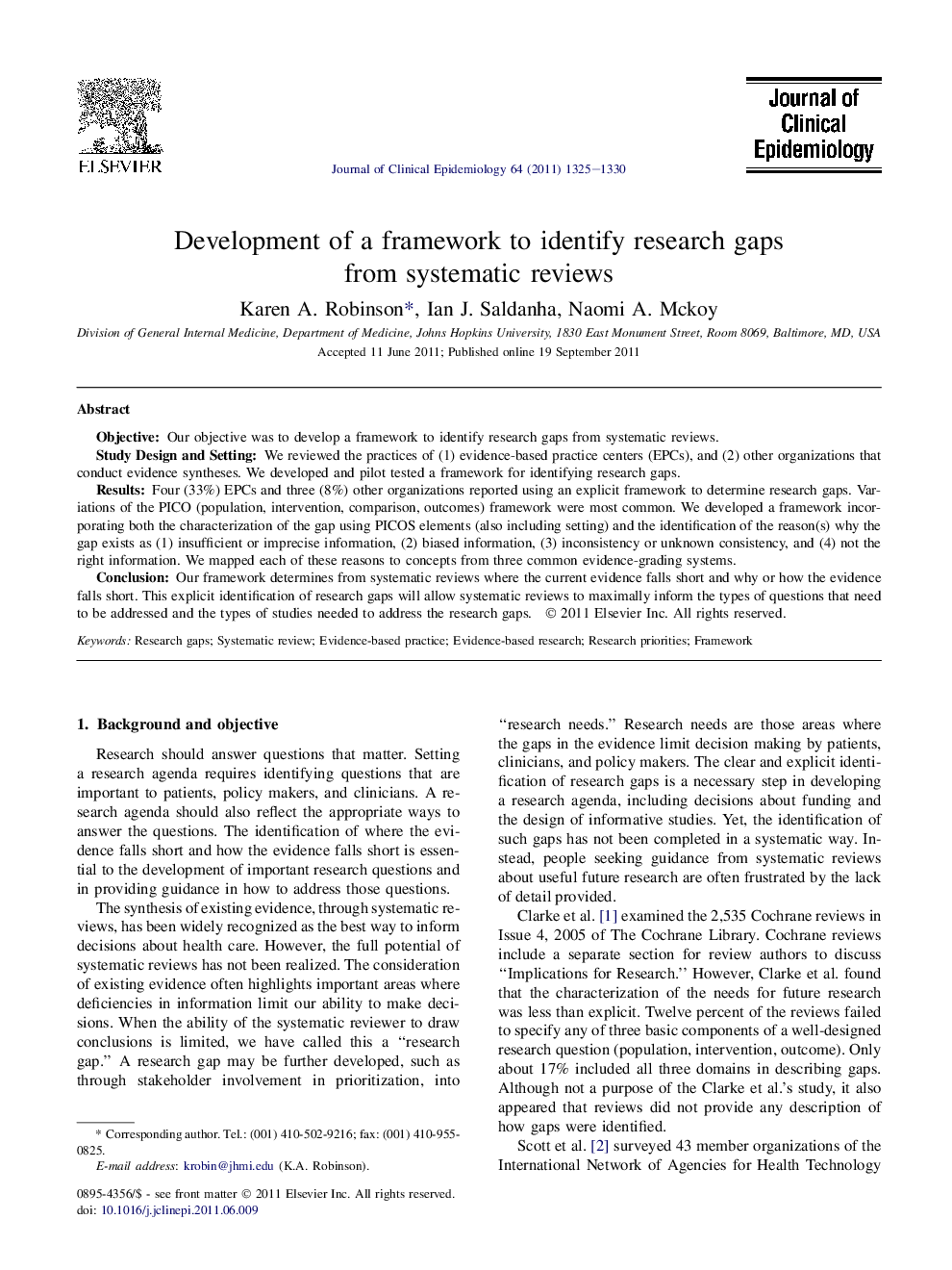| Article ID | Journal | Published Year | Pages | File Type |
|---|---|---|---|---|
| 1082982 | Journal of Clinical Epidemiology | 2011 | 6 Pages |
ObjectiveOur objective was to develop a framework to identify research gaps from systematic reviews.Study Design and SettingWe reviewed the practices of (1) evidence-based practice centers (EPCs), and (2) other organizations that conduct evidence syntheses. We developed and pilot tested a framework for identifying research gaps.ResultsFour (33%) EPCs and three (8%) other organizations reported using an explicit framework to determine research gaps. Variations of the PICO (population, intervention, comparison, outcomes) framework were most common. We developed a framework incorporating both the characterization of the gap using PICOS elements (also including setting) and the identification of the reason(s) why the gap exists as (1) insufficient or imprecise information, (2) biased information, (3) inconsistency or unknown consistency, and (4) not the right information. We mapped each of these reasons to concepts from three common evidence-grading systems.ConclusionOur framework determines from systematic reviews where the current evidence falls short and why or how the evidence falls short. This explicit identification of research gaps will allow systematic reviews to maximally inform the types of questions that need to be addressed and the types of studies needed to address the research gaps.
